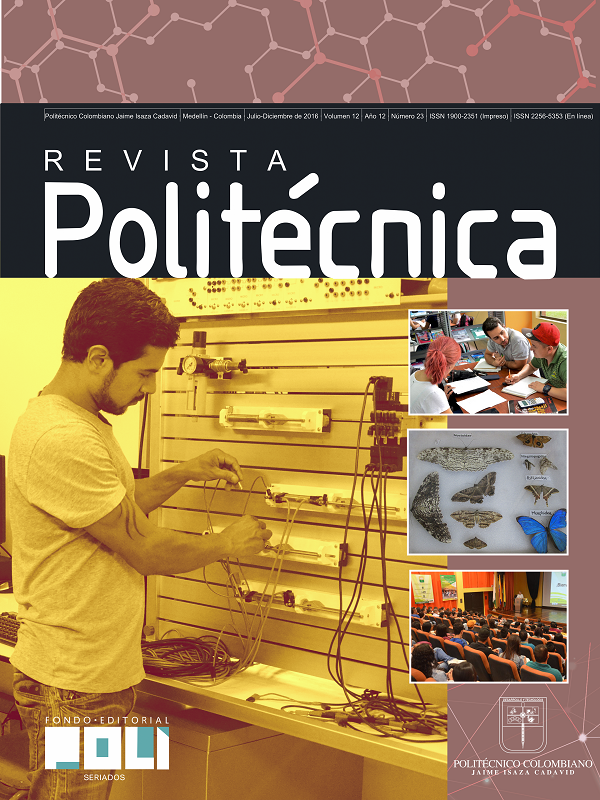Implementation of a Non-Linear Control For Robot-Human Tracking with a 3D Sensor
Keywords:
skeleton tracking, Kinect® sensor, human tracking robot, non-linear controlAbstract
At present more adult persons need of mechatronic devices that facilitate and help them in his daily activities. The mobile robots turned into a good alternative due to the fact that nowadays the technology has allowed that they can recognize and make the tracking of a person. In this work, is used the Robotics platform Pionner 3-AT® and a sensor of depth Kinect® to making the tracking of a person. Sequences of images of depth and an algorithm of recognition of skeletons, supplied by the Kinect®, it allows to know and to estimate the coordinates and speed of a person, that to be introduced to the non-linear control based on linearization by feedback, it generates the command of linear and angular speed that will made that the robot keep an orientation and distance wished to a person. Finally, we introduce and argue the results achieved after carry out the validation of the algorithm with a series of experimental tests.
Article Metrics
Abstract: 393 HTML (Español (España)): 88 PDF (Español (España)): 215 XML (Español (España)): 35References
Ortman, J. M., Velkoff, V. A., y Hogan, H. An aging nation: the older population in the United States., DC: US Census Bureau., 25-1140, 2014.
United Nations. World Population Ageing 2015. WPA2015. New York. Department of Economic and Social Affairs Population Division., 2015.
Broekens, J., Heerink, M., y Rosendal, H. Assistive social robots in elderly care: a review. Gerontechnology., 8, 94-103, 2009.
Dahl, T. S., y Boulos, M. N. K. Robots in Health and Social Care: A Complementary Technology to Home Care and Telehealthcare?. Robotics., 3, 1-21, 2013.
Beech, R., y Roberts, D. Assistive technology and older people. London: SCIE., 2008.
Allen, K., y Glasby, J. ‘The Billion Dollar Question’: Embedding Prevention in Older People's Services—Ten ‘High-Impact’Changes. British Journal of Social Work, bcs024., 2012.
Cao, M., y Hashimoto, H. Specific person recognition and tracking of mobile robot with Kinect 3D sensor. In Industrial Electronics Society, IECON 2013-39th Annual Conference of the IEEE., 8323-8328, 2013.
Hoshino, F., y Morioka, K. Human following robot based on control of particle distribution with integrated range sensors. In System Integration (SII), 2011 IEEE/SICE International Symposium on., 212-217, 2011.
Wengefeld, T., Eisenbach, M., Trinh, T. Q., y Gross, H. M. May I be your Personal Coach? Bringing Together Person Tracking and Visual Reidentification on a Mobile Robot. In ISR 2016: 47st International Symposium on Robotics; Proceedings of.,1-8, 2016.
Doisy, G., Jevtic, A., Lucet, E., y Edan, Y. Adaptive person-following algorithm based on depth images and mapping. In Proc. of the IROS Workshop on Robot Motion Planning., 2012.
Xing, G., Tian, S., Sun, H., Liu, W., y Liu, H. People-following system design for mobile robots using Kinect sensor. In 2013 25th Chinese Control and Decision Conference (CCDC)., 3190-3194, 2013.
Chu, H. C., Chien, M. F., Lin, T. H., y Zhang, Z. J. Design and implementation of an auto-following robot-car system for the elderly. In System Science and Engineering (ICSSE), 2016 International Conference on.,1-4, 2016.
Soria, c., Carelli, R., Kelly, R., y Ibarra Zannatha, J. Control de robots cooperativos por medio de visión artificial. XVI congreso de la asociación chilena de control automático. 2004.


 _
_


















